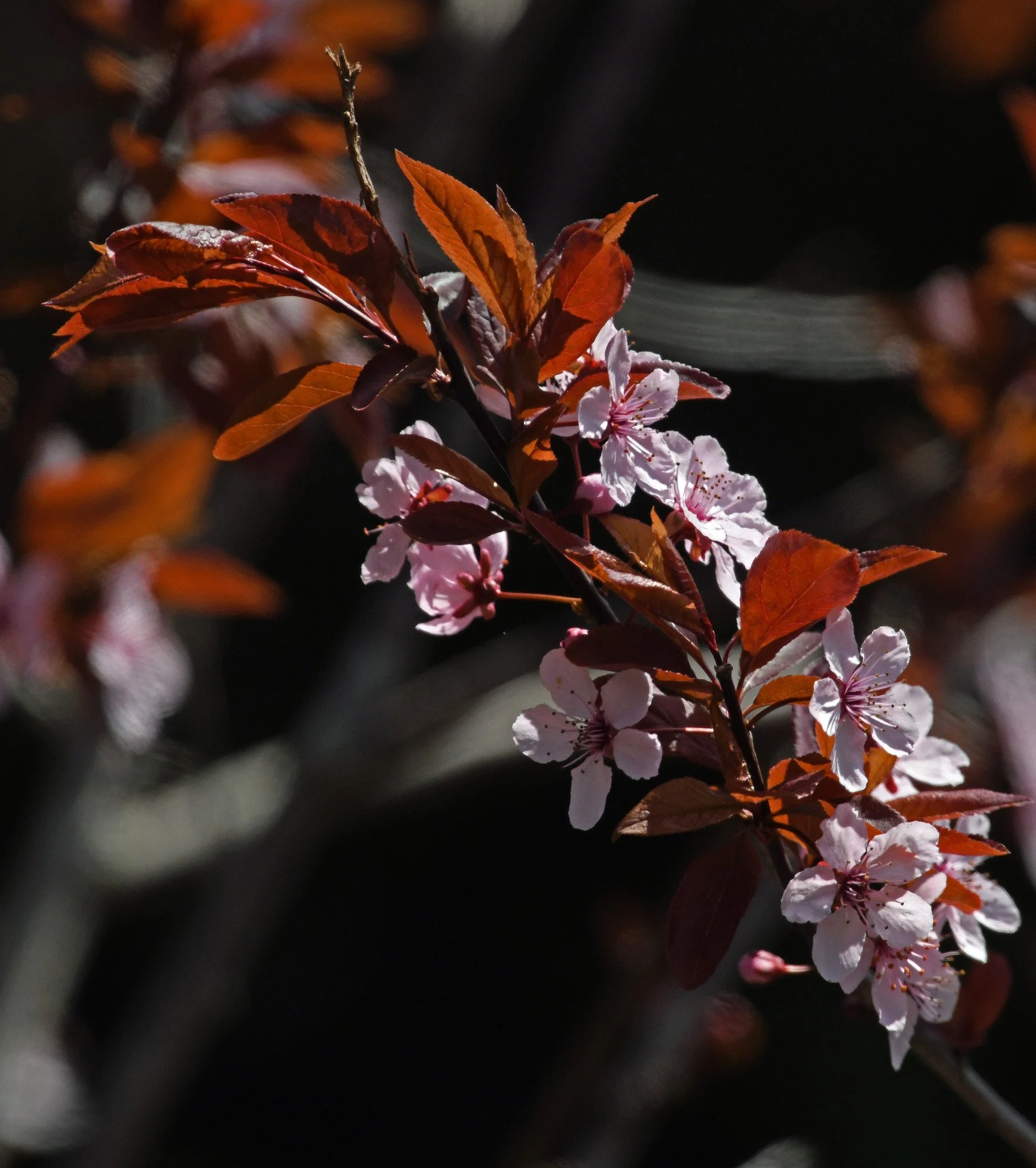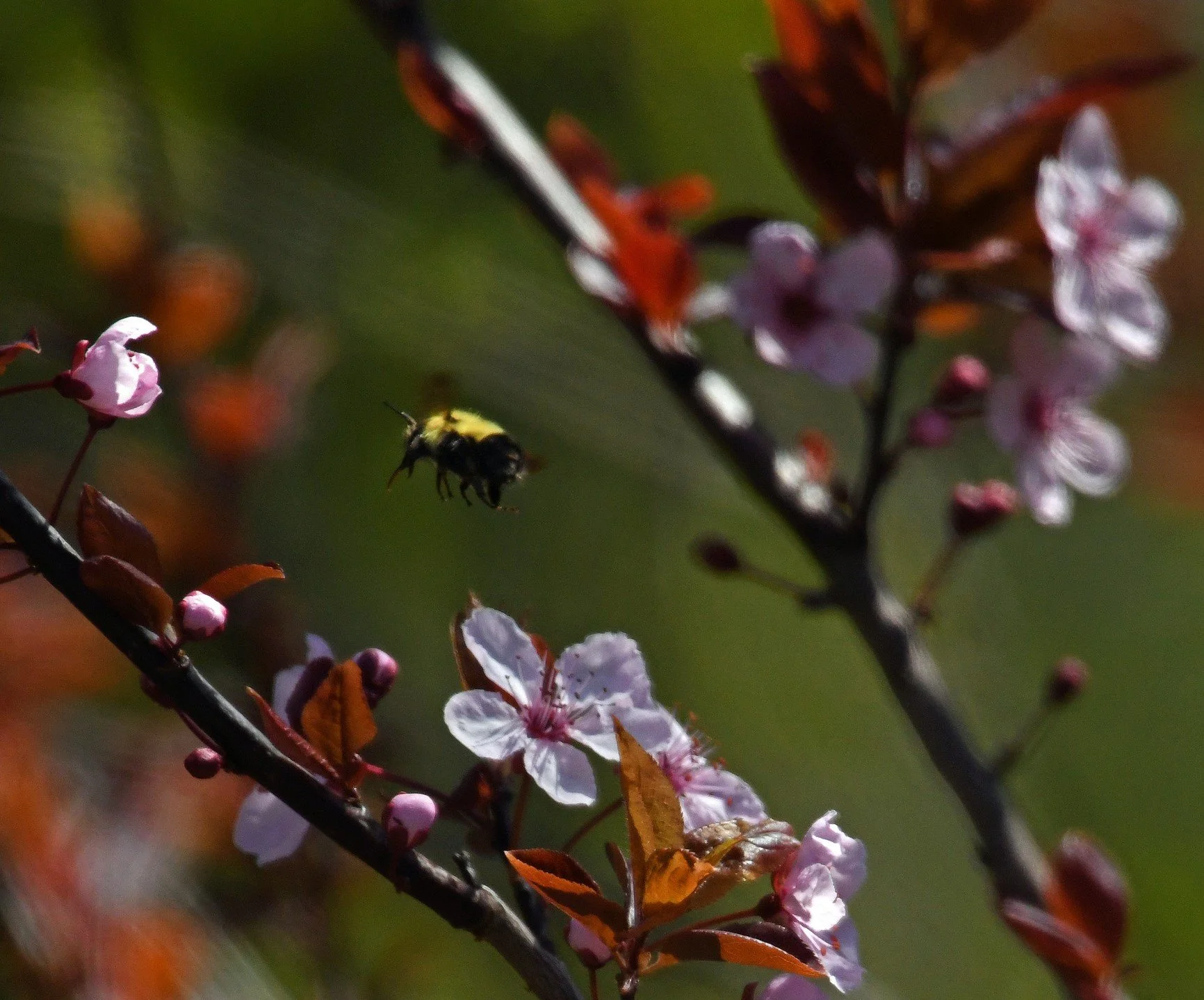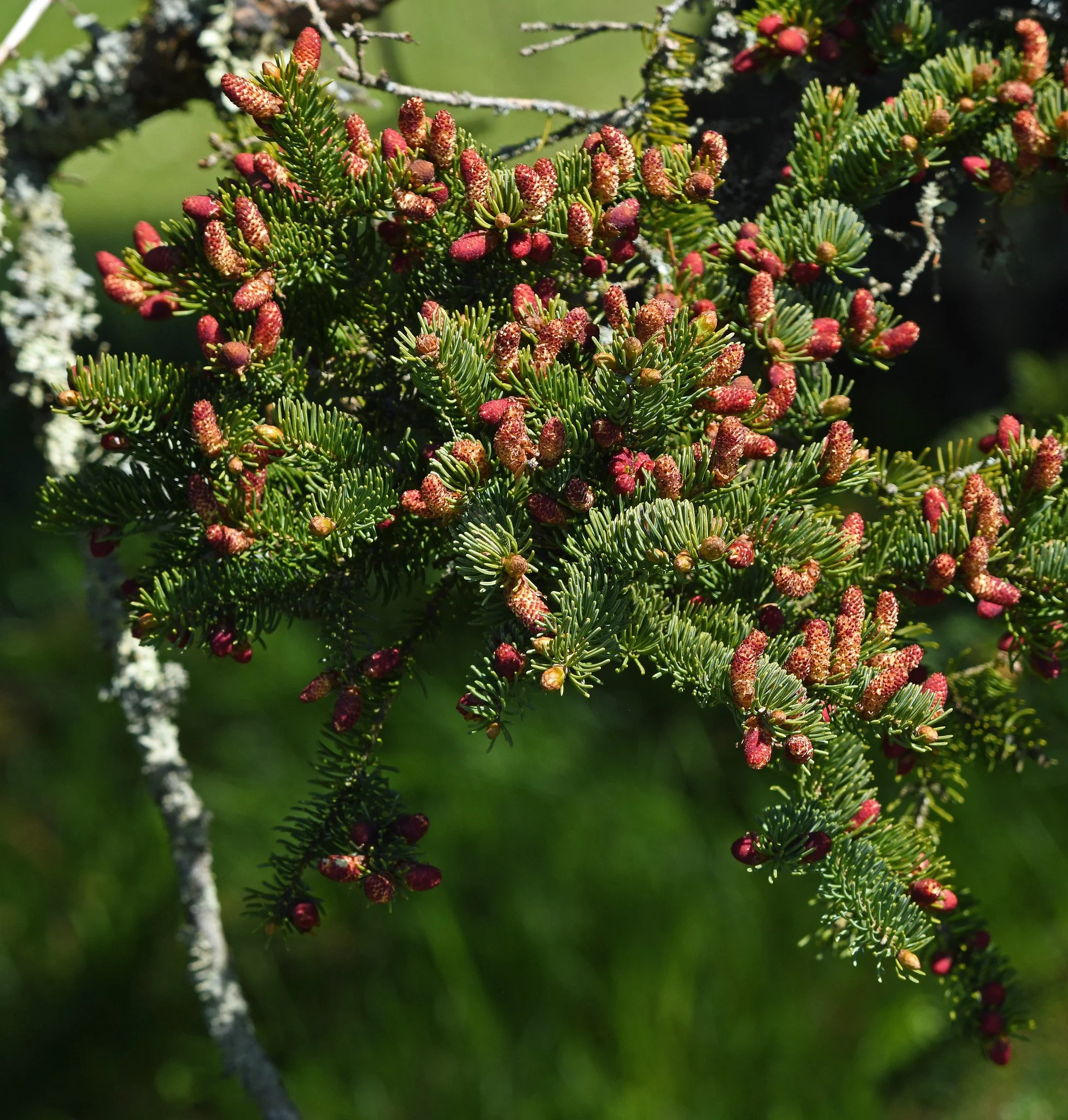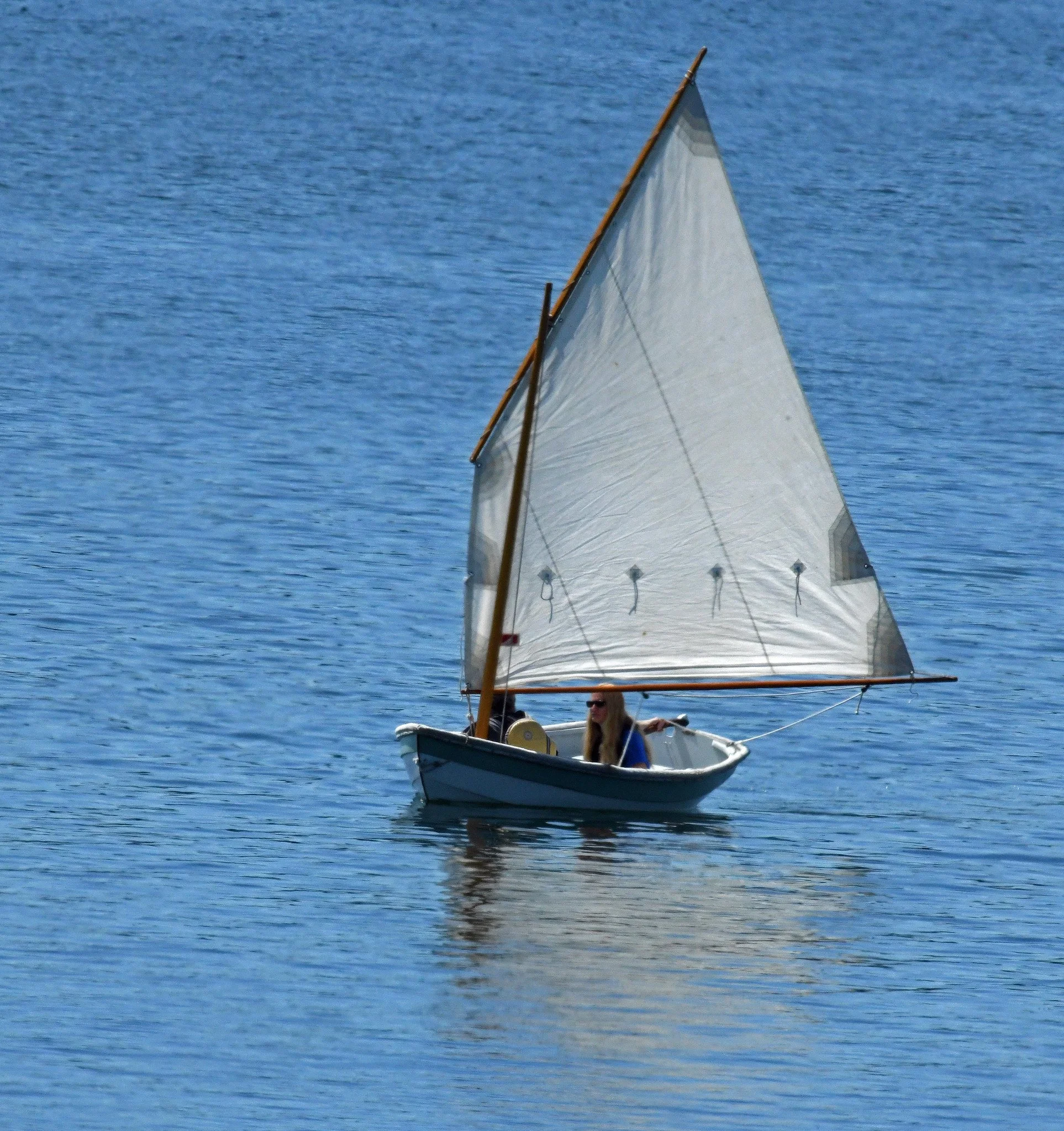Here we see a small sea boat, that is within a small field pond, that is within a small town where incongruity is smiled upon.
(Image taken in Brooklin, Maine, on May 15, 2022.)
JOURNAL
Here we see a small sea boat, that is within a small field pond, that is within a small town where incongruity is smiled upon.

(Image taken in Brooklin, Maine, on May 15, 2022.)
We’ve had fog in Center Harbor during the past four days, but some of the boats look especially good in the mist. One of them, shown here, is Planet, a 25-foot Charles Wittholz catboat from his Prudence series.

Wittholz (1918-1993), an MIT-trained naval architect from Maryland, designed hundreds of boats in his 50 years of practice, but he probably is best known for his catboats.
Recreational catboats, such as Planet, are descendants of broad-beamed, single-masted working boats of the 1800s that fished, freighted, and ferried. They often were sailed by one person. The name catboat reportedly came from one of two sources: the cat-like maneuverability of the boats or the actual cats that greeted the fleet when they off-loaded fish.
More and more boats are mooring at the Harbor each day. The boating season usually is considered to open in June. Here’s the Brooklin Boat Yard pier during the same fog:

(Images taken in Brooklin, Maine, on May 15, 2022.)
The blooms of flowering plum trees have been peaking here for about a week. They’ve been a boon to the early bumble bees in need of nectar and a welcome sight for spring-starved residents.

There are over 200 types of trees known as plums, and they’re generally divided into those that are grown primarily for their fruit and those with no or very few fruit that are grown for their beautiful flowers. (The tree shown here annually produces one or two plums and many flowers.)

The flowers of all plumb trees resemble those of cherry, apricot, and peach trees, to which plums are related as members of the huge rose family. Fruit plums usually have white flowers, while the flowering versions often have pink as well as white blossoms.
As with most fruits from the apple family, plums make excellent brandy. In fact, Serbia’s national drink is plum brandy (“slivovitz”), which it distributes worldwide. (Images taken in Brooklin, Maine, on May 11 [bee] and 12, 2022.)
Here you see a majestic white spruce tree enjoying yesterday’s warm sun.

It looks to be about 70 feet tall and is filled with new cones:

Each white spruce (Picea glauca) produces both male (pollen-producing) cones and female (seed-producing) cones.
There’s an old saying that a bumper crop of spruce, fir, and/or pine cones means that nature is providing extra wildlife food for a rough winter ahead. Research has indicated that these conifers are not so generous; they’re trying to survive as a species. The bumper crop comes after the trees suffered a stressful prior year due to a dry or otherwise significantly-changed climate. Producing more seeds increases the odds of their species carrying on during difficult times.

White spruce trees are an important Maine softwood resource used for pulp, paddles, oars, piano sounding boards, lumber, and wreath cones. Their durable roots were used by Native Americans to tie canoe birch bark panels together. They’re also called skunk spruce due to their odor at times, especially when their seeds are crushed. (Images taken in Brooklin, Maine, on May 14, 2022.)
We saw this welcome sight Thursday morning: the first sailboat of the year, catching light wind in Great Cove. She appears to be one of the WoodenBoat School’s small shellbacks with two WBS staffers aboard.

The boat is part of the School’s fleet of small craft, which is being readied now for the beginning of sailing classes in June.

The shellbacks are small recreation boats designed by famed Brooklin naval architect Joel White and built at the School. They’re 11’ 2” long with a beam (widest part) of 4’ 5”, according to WBS data. They have standing lug rigging, which can be put up easily and, in sudden bad weather, taken down quickly. The rigging also conveniently allows the sail to stay on the same side of the mast when tacking to port or starboard. (Images taken in Brooklin, Maine, on May 12, 2022.) See also the image in the first Comment space.
Harriet apparently has started incubating eggs; she spent most of her time this week flattened in the nest bottom. Ozzie brings her food and does some of the incubation himself occasionally, allowing Harriet to take a break and fly away for a time. Here you see Ozzie returning to the nest at Harriet’s request this week:

With Harriet spread out in the nest, Ozzie sometimes has to slowly helicopter into the nest to avoid hurting Harriet (and getting too close to her pecking beak:



Research indicates that female ospreys lay between one and four eggs, with each egg being laid a day or two after the prior one. The most common clutch is three eggs, which is the number that Harriet usually lays. The reported incubation time range for the first chick to be hatched is 35 to 43 days, with birds incubating in the northern latitudes, such as Harriet, taking longer than those in southern ones. She remains feisty when Ozzie is around:

(Images taken in Brooklin, Maine, on May 8, 2022.)
This image of a black bear is appearing today in my monthly column in the Ellsworth American.

To read the column about what to do if you meet a bear in its habitat, click here: http://www.5backroad.com/montly-column
Green arrow arum plants (Peltandra virginica) are now emerging from marsh ponds like batteries of missiles, as you can see from this image taken yesterday:

By mid-June they’ll be a green tangle of lush and graceful arrow-tipped stalks. Here’s an image taken of same colony of plants taken on June 17 of last year:

Leighton Archive Image
The plant is sometimes called tuckahoe, its Algonquin Indian name. Of course, the first word in its arrow arum name reflects its arrowhead leaf shape. The name arum shows that it is part of the arum family of plants. That group name is thought to derive from the Arabic word for fire because many of the family plants have toxic sap that burns those crazy enough to taste them. However, the edible fruits of arrow arum are loved by ducks, muskrats, and other marsh creatures. (Primary image taken in Brooklin, Maine, on May 10, 2022.)
The lily ponds here are full of water, as you see from this image of the WoodenBoat School pond taken yesterday.

Moreover, the pads for our native fragrant water lilies (Nymphaea odorata) are starting to rise to the surface:

Lily pads are the leaves of the water lily plant. They grow on flexible stalks arising from submerged roots (“rhizomes”). The pads will attract insects and become floating al fresco cafes for small frogs and birds. Underneath the lily pads, fish and aquatic invertebrates, such as dragonfly nymphs, will enjoy the shade.

Leighton Archive Image

Leighton Archive Image
The genus name for the water lily, Nymphaea (“nim-FYE-ah”), is derived from the Greek and Roman name for “water lily,” which, in turn, originated as a reference to mythological water nymphs. Our native species’ name, odorata (“o-dor-RAH-ta”), means “fragrant,” as you probably guessed. (First two images taken in Brooklin, Maine, on May 9, 2022.)
A few of our forsythia bushes continue to be robust for early May, but all of their little yellow flower heads soon will be decapitated by natural forces. This may be your last chance to view some of our more fulsomely flowered forsythias.

The plants were named after the 18th Century Scottish botanist William Forsyth. They’re part of the olive family and are native to east Asia and southeastern Europe, but they’ve been popular in Great Britain and the United States for centuries. Victorian gardeners considered forsythias to be symbols of anticipation, perhaps because their blooms are among the first flowers of spring.

Those flowers, by the way, are edible and can be made into teas, syrups, and a traditional Chinese medicine to treat the common cold.

(Images taken in Brooklin, Maine, on May 5, 6 [landscapes] and 8 [closeup], 2022.)
Happy Mother’s Day! Today, we’ll share the Fuller family’s road poster on Naskeag Road with the hope that the thought is widely applied.

(Image taken in Brooklin, Maine, on May 7, 2022.)
Star magnolias have been at their most magnificent this week. Each of their fragrant flowers continually changes its flowing form in the wind, light, and shadows.

The plants, also called magnolia stellata, love full sun and are among the first large plants to flower in the spring. They also can be trained to grow into a shrub or tree:

As with many of our ”showy” flowering plants, star magnolias are natives to Japan. They were introduced in the United States in the 1860s.

(Images taken in Brooklin, Maine, on May 5 [tree] and 6 [flowers], 2022.)
Ozzie and Harriet continue to look healthy. As is common during osprey breeding season, Harriet has begun to engage in almost incessant, loud chirps that are called “food-begging” and “solicitation” calls. She does this whenever Ozzie is in the nest with her or visible to her while she is in the nest alone. This image shows her making such calls yesterday:

Male ospreys bring most of the pair’s food (fish) to the nest when their mate is laying eggs and brooding there. When the nesting female osprey sees her mate flying in with a fish or eating one nearby, she often chirps loudly. Ornithologists have dubbed these sounds “food-begging calls” when it is apparent that she’s looking at food.
Nonetheless, a breeding female osprey will make the same calls directed at her mate when he does not have food and she does not appear to be hungry. Why she does this apparently is still a matter of debate among researchers who call them simply “solicitation calls” without identifying what the female is asking for (if anything).
Although Harriet is spending much more time lying down in the nest, she does get restless and take off for flights of up to 30 minutes, often returning with some moss or a new stick for the nest:


This flying leads me to believe that she hasn’t laid any eggs yet. (Images taken in Brooklin, Maine, on May 2 [Harriett flying] and 5 [the pair], 2022.]
A few male red-winged blackbirds are back, fighting over real estate options and screaming at photographers.

The females usually arrive here when the territories have been settled and the males have time to woo them. The females are much smaller and look like gussied-up sparrows:

The pair is an odd couple, but a very aggressive one; if red-wings were eagles, we’d be in trouble. (Leighton Archive images taken in Brooklin, Maine.)
This white-tailed deer yearling heard me before she saw me yesterday. Recent research reportedly indicates that the hearing of white-tails is even better than we thought and may be the animals’ most important sense.

These deer hear everything humans can hear, plus low and very low frequencies that we can’t hear, such as distant foot falls on the forest floor.
White-tails triangulate the location of a sound by using their three primary senses. Their ears are many times larger than ours and virtually all other animals in their habitat. Their “pinnae” (external ear parts) can rotate separately like radar dishes to locate sound and extra fur in the ear opening may help funnel that sound into their ear canals.
Their eyesight reportedly is worse than ours, except at night. With eyes on opposite sides of their head, deer can’t focus well on a spot with both eyes – they’re looking out of the side of their eyes when their nose is pointed at you. They also see at a lower resolution than we do during the day and are thought to be colorblind.
White-tails do have a much better sense of smell than we do. But, the scent has to reach them. The wind can prevent a scent from reaching their big, wet nose, which traps odor particles. (Image taken In Brooklin, Maine, on May 3, 2022.)
The eastern skunk cabbage plant that we’ve been monitoring in our bog was just starting to leaf out seriously yesterday, as you see.

I suspect that it would have been much more advanced if we had not had such a cold and wet early spring. At times, much of the plant was under water.
Now that the vernal pools are starting to dry out, we suspect that the skunk cabbage will start to leaf out quickly. It likely will become surrounded by ferns and grasses as it is every year:

Leighton Archive Image
(Primary image taken in Brooklin, Maine, May 2, 2022.)
May 2, 2022
Forsythia is blooming nicely now. Here you see a bush arising out of a patch of bluets.

The bush below stands guard over a field pond that once might have served as a fire pond for an old estate.

(Images taken in Brooklin, Maine, on April 30, 2022.)
April is the month tasked with the important job of bringing showers needed for May’s flowers. This year, April was annoyingly exuberant. She brought more rain than was needed and more fog and cold than was wanted. The days in which she gave us serious sun, true blue skies, and racing puffy clouds provided startling contrasts.

Pumpkin Island in the Rain, Little Deer Isle

Blue Hill Bay and Acadia National Park Viewed from Brooklin

Brooklin Bog in the Rain

Brooklin Woods

Brooklin Pond in the Rain

Brooklin Spring-Fed Stream
On the waterfront, things are quiet here in April. The scallop-dragging season is over and the lobster-trapping season has yet to begin. For most of the month, there was only one, small fishing vessel in Naskeag Harbor. Yet, the vessels of the WoodenBoat School seemed eager to be let-out of storage and their mooring gear provided an impressionistic outdoor spring sculpture.



April also is a month that brings its own flowers, the first spring blooms. Some were pollen-laden lifelines for early-arriving bees and other insects.

Daffodil

Star Magnolia

Forsythia

Red Maple

Pussy Willow
Lichens, shelf mushrooms, and bog plants flourished in April’s wet weather.

Tree Lungwort Lichen

British Soldier Lichen

Red-Belted Polypore Mushroom

Skunk Cabbage Leaves Starting to Emerge
The wildlife highlight of the month was the return of Ozzie and Harriet, a pair of ospreys that have a nearby summer residence that I’ve been studying and photographing for four years.


The resident white-tailed deer start to shed their winter coats in April and the resident painted turtles arise from the muck at the bottom of ponds and hope for a little sun to get their cold-blooded bodies working.


As a personal aside, April is our anniversary month and always is brightened by an arrangement from Fairwinds Florist in Blue Hill. This year, the opening tulips were spectacular.


Finally, it rained on the night of the full moon, wouldn’t you know. However, I fortunately caught the moon the night before, when the human eye couldn’t tell that it was not completely full. It was named the Pink Full Moon by Native Americans because it arrived when pink flowers arrived, such as the red maple tree flowers above.

(All images in this post were taken in April of 2022 in Brooklin, Maine, except the indicated image taken in nearby Little Deer Isle, Maine, during the month.)
Fiddlehead mummies are staring to appear here. As you may know, fiddleheads, named for their shape, are the coiled fronds of young ferns. Although virtually every species of fern starts from a fiddlehead, not all species are safe to eat.

Ostrich fern fiddleheads are edible and considered to be delicacies in New England. They can be identified by their tan paper-like or mummy-like coverings at their early stages. As they grow to edible size, they have a smooth (not fuzzy) green stem that usually has an inside grove.
(Image taken in Brooklin, Maine, on April 29, 2022.)
Ozzie and Harriet appear to be doing well. She’s spending more time alone in the nest, but I’ve seen no signs of attempted egg laying yet. I expect to see her laying down for that within weeks, if not days.
The highlight of last week occurred on Monday. Harriet was alone in the nest and started screaming while staring into the sky. Circling very high above her was an Osprey – but not Ozzie. The stranger’s circles became lower and lower, and Harriet’s screams became incessant.

Then, just like in the movies, Ozzie appeared out of nowhere and went right at the stranger with incredible speed. There was a wonderful looping and diving aerial chase above Great Cove and then into the distant horizon, where the birds disappeared from view. (The image of Ozzie here was taken at the beginning of the chase.)
After about two minutes, which seemed longer, Ozzie returned to the nest and was greeted by Harriet making the victory sign with outspread wings to congratulate him – wait, actually that’s not quite true; I got a little carried away.

When one of these birds zooms to the nest while the other is in it, there can be raised wings all around if the landing trajectory and speed are not perfect. Two birds, each with a five-and-one-half-foot wingspan, have to be careful in such tight spaces; there sometimes is a talons-out crash. (Images taken in Brooklin, Maine, on April 25, 2022.)